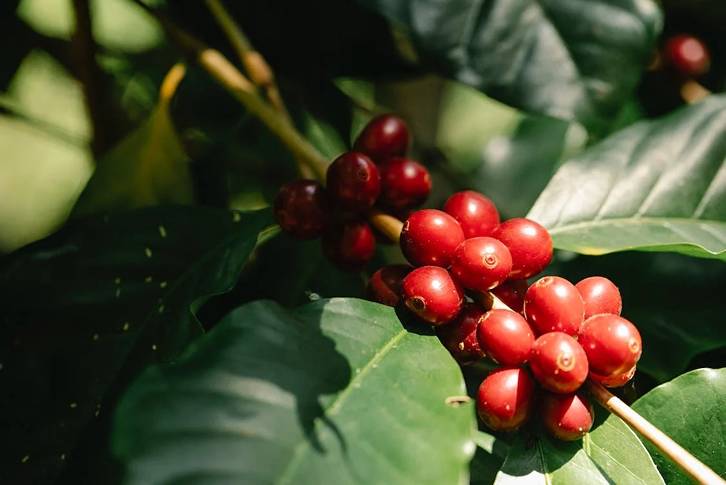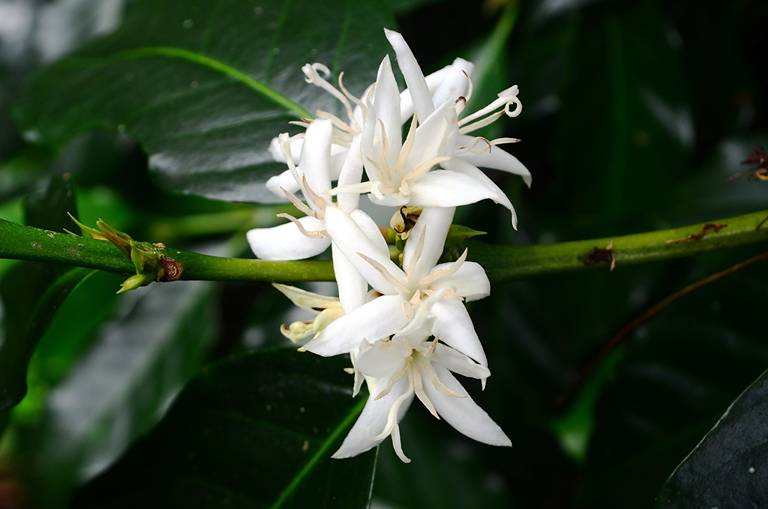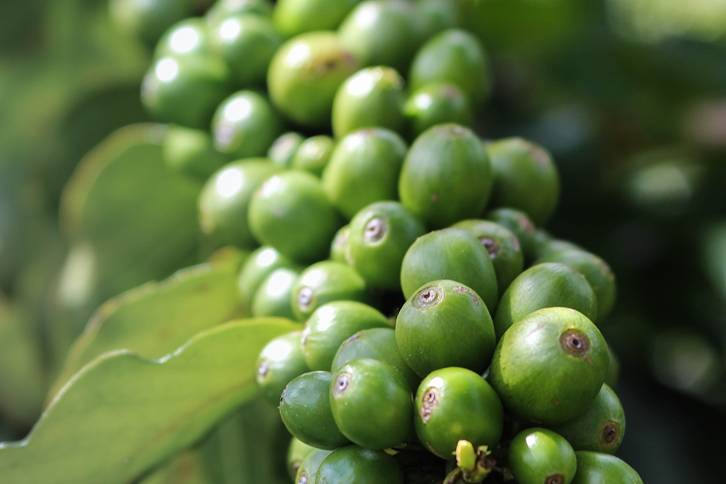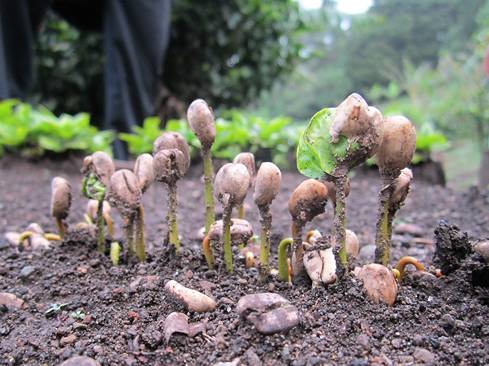Learning how to grow a coffee at home can be a fun and rewarding experience.
Not only will you get to enjoy the fruits of your labor, but you’ll also have complete control over the quality of your coffee beans.
There are a few things to keep in mind before you get started, though. First, coffee plant growing is not as easy as growing other plants.
You’ll need to be patient and attentive to your coffee plants to ensure they thrive.
Second, you’ll need to choose the right type of beans for coffee plants grow.
While there are many different varieties of coffee beans, not all of them are suitable for growing at home.
Lastly, you’ll need to provide your coffee plants with the proper care and attention.
This includes watering, fertilizing, and pruning them on a regular basis.
In this guide, we’ll show you everything you need to know about growing your own coffee at home—from choosing the right beans to harvesting your crop.
What Kind of Beans to Use for Growing Coffee?
According to the National Coffee Association, there are over 100 different varieties of coffee beans in the world. But when it comes to growing at home, there are only a handful of varieties that are suitable.
The two most popular varieties of coffee beans for home growers are Coffea Arabica and Coffea Robusta.
Arabica coffee beans are the most popular type of coffee beans in the world.
They’re prized for their mellow flavor and complex aroma.
Arabica beans grow to be about 12 feet (3.7 meters) tall, making them ideal for home growers.
Robusta coffee beans are less popular than Arabica beans but still make up a significant portion of the world’s coffee production.
Robusta beans are known for their high caffeine content and bitter flavor. They’re robust plants that can grow to be up to 32 feet tall (9.8 meters).
So, if you’re growing your coffee plant indoors, you’ll want to choose an Arabica variety.
And if you’re growing your coffee plant outdoors, you can choose either an Arabica or Robusta which are the two main varieties.
But again, the flavor of your coffee will ultimately be determined by the variety of beans you choose, so make sure to select a variety that you know you’ll enjoy.
How to Grow Coffee Plant at Home
If you’re new to growing, don’t worry—it’s not as difficult as it may seem. With a little patience and attention, you can successfully grow your own coffee at home.
There are 2 ways to grow coffee plants: from seed (beans) or cuttings.
How to Germinate Coffee Plant Seeds
Before we proceed, is coffee a fruit? The coffee fruit often called a coffee cherry contains two beans.
The coffee bean is actually the seed of the coffee cherries.
If you want to grow your coffee plant from seed, you’ll need to purchase green (unroasted) coffee beans from a specialty retailer.
You can also find green coffee beans at some health food stores.
Once you have your coffee beans, follow these steps to germinate them:
Step 1:
Fill a bowl with water and soak your coffee beans for 24 hours. Soaking the beans will make them softer and easier to germinate.
Step 2:
Drain the water from the bowl and rinse the beans several times.
Step 3:
Sow the beans in a seed-starting mix or potting soil. You can plant the beans directly in the soil if you’d like, but starting them in a mix or soil will help them germinate more quickly.
Step 4:
Place the pot near a room window where it will receive indirect sunlight.
Step 5:
Keep the soil moist but not soggy. Water your coffee beans when the top inch of the soil feels dry to the touch.
Step 6:
Within 2-6 months weeks, your coffee beans should germinate and begin to sprout. Once they’ve sprouted, continue to water them as needed and provide them with indirect sunlight.
Step 7:
Once your coffee plant has grown to be about 6 inches (15 centimeters) tall, you can transplant it to a larger pot or plant it outdoors.
How to Propagate Coffee Plants from Cuttings
The easiest and more certain way to plant coffee plants is to take cuttings from an existing plant.
Cuttings are simply small pieces of stem that you can take from a mature plant and use to grow a new plant.
You can get cuttings from a friend or neighbor who has a coffee plant, or you can purchase them from a nursery or online retailer.
When taking cuttings from an existing plant, make sure to choose a healthy plant that’s free of pests and diseases.
It’s also important to choose a cutting that’s about 8 to 10 inches (20 to 25 centimeters) long.
Once you have your cutting, follow these steps to plant it:
- Fill a pot with a well-draining potting mix or soil.
- Dip the end of the cutting in the rooting hormone. This will help the plant to grow roots more quickly.
- Plant the cutting in the pot, making sure that the hormones are in contact with the soil.
- Water the plant well and place it in a location where it will receive indirect sunlight.
- Water the plant regularly, keeping the soil moist but not soggy.
- After 2-3 months, your plant should be well-rooted and ready for transplanting.
Another way to propagate coffee plants is by using air layering.
Air layering is a technique in which you allow a branch on the plant to form roots while it’s still attached to the parent plant.
You can then cut the branch from the plant and pot it up, creating a new plant.
Air layering is a bit more complicated than taking cuttings, but it’s a great option if you’re unable to take cuttings from an existing plant.
Potting and Repotting Your Coffee Plant
Once your coffee plant has germinated or been propagated, you’ll need to pot it up in a well-draining pot.
Coffee plants can be potted in a variety of materials, including clay, ceramic, plastic, and metal.
It’s important to choose a pot that has drainage holes in the bottom to allow excess water to drain out.
When potting your coffee plant, use a well-draining potting mix or soil. You can also add some organic matter, such as compost, to the mix to help improve drainage.
Once you’ve potted your coffee plant, water it well and place it in a location where it will receive indirect sunlight.
Coffee plants should be repotted every spring to allow them to continue growing.
When repotting, choose a pot that’s only 2-3 inches (5-7 centimeters) larger than the previous pot.
This will help to prevent the roots from becoming pot-bound.
How to Care For Your Coffee Tree
Coffee plants are relatively easy to care for, but there are a few things you’ll need to do to keep them healthy.
Here are some tips for caring for your coffee plant:
How to Water a Coffee Tree
Watering is the most important aspect of care for coffee plants. Coffee plants need to be watered regularly to prevent them from becoming stressed.
Water your plant when the top inch of soil feels dry to the touch. Be careful not to over-water, as this can lead to problems such as root rot.
How to Prune Coffee Plant
Prune your plant to encourage new growth and to keep it from becoming too large. Pruning is also important for shaping the plant and promoting air circulation.
To prune your coffee plant, cut away any dead or dying branches. You can also cut back any long or leggy branches to encourage new growth.
Fertilizing Coffee Plant
Fertilizing your coffee plant is important for promoting healthy growth. Use a mild liquid fertilizer every two weeks during the growing season.
You can also add a slow-release fertilizer to the potting mix when repotting your plant.
Once your plant matures, you can reduce the frequency of fertilization to once or twice a year. The best time to fertilize is in the spring and summer.
Pests and Diseases

Coffee plants are relatively resistant to pests and diseases, but there are a few that you should be on the lookout for, including:
- Aphids
- Mealybugs
- Scale insects
- Whiteflies
If you notice any of these pests on your plant, you can remove them by hand or treat the plant with insecticidal soap.
There are a few diseases that can affect coffee plants, but the most common is root rot. Root rot is caused by too much water and can be fatal to the plant.
If you notice any signs of root rot, including yellowing leaves or soft, mushy roots, you should remove the affected plant from the pot and replant it in a fresh potting mix.
Plant Temperature and Humidity
Coffee plants prefer warm temperatures and high humidity. They should be kept in a location where the daytime temperature is between 70-80 degrees Fahrenheit (21-27 degrees Celsius).
At night, the temperature can drop to 65 degrees Fahrenheit (18 degrees Celsius).
Coffee plants also prefer high humidity, so they should be kept in a location with over 50% humidity.
If the humidity is too low, you can raise it by misting the plant with water or placing a humidifier nearby.
The Best Soil for Coffee Plant Care
Coffee plants prefer a well-draining, slightly acidic soil. You can use a commercial potting mix or make your own by mixing equal parts peat moss, perlite, and vermiculite.
You can also add compost or other organic matter to the mix to improve drainage.
The ideal pH for coffee plants is between 6.0 and 6.5. You can test the pH of your soil with a pH meter or test kit.
If the pH of your soil is too high or too low, you can adjust it by adding sulfur or lime to raise the pH or vinegar or peat moss to lower the pH.
Light

Coffee plants need bright, indirect light to grow well. They can tolerate some direct sunlight, but too much sun can scorch the leaves.
If you live in a hot climate, it’s best to grow your coffee plant in an east- or west-facing window. In a cooler climate, a south-facing window is ideal.
You can also coffee plants grow under artificial lights. Place the lights about 12 inches (30 cm) above the plant and leave them on for 14-16 hours per day.
When and How to Harvest Coffee Beans

Coffee plants take about 3-4 years to mature and produce beans. The beans are ready to harvest when they turn from green to yellowish-brown.
To harvest the beans, cut the stem with a sharp knife and remove the ripe beans from the plant. You can then dry the beans in the sun or a food dehydrator.
Once the beans are dry, they can be roasted and ground to make coffee.
Enjoying Your Homemade Coffee
There’s nothing quite like a cup of freshly brewed coffee made from beans you grew yourself.
Homemade coffee is also a great way to impress your friends and family.
With a little coffee plant care and patience, you can grow your own plants and enjoy the fruits of your labor for years to come.
From plant to beans to brewed coffee, the process is all yours to enjoy.
See our article on biodynamic coffee here.
Coffee Plants FAQs
How Long Does It Take to Grow Coffee?
It takes about 3-4 years for a coffee plant to mature and produce the fruits (coffee berries) that contain the beans. Once the berries are ripe, they can be harvested and roasted to make coffee.
Is It Hard to Grow Coffee Beans?
No, it’s not hard to grow coffee beans. Coffee plants are relatively easy to care for and can be grown indoors or outdoors. However, it does take some time for the plants to mature and produce beans. So, you’ll need to be patient if you want to enjoy your own homegrown coffee.
What Is Required to Grow Coffee?
To grow coffee, you’ll need coffee seeds (or for those propagating, cuttings), acidic soil, water, and sun. Coffee plants can grow indoors or outdoors, but they need warm temperatures of at least 70-80 degrees Fahrenheit (21-27 degrees Celsius) and high humidity (over 50%) to thrive.
Can You Grow Coffee Indoors?
Yes, you can plant grow coffee indoors. However, it’s important to create the right conditions for your plants. Coffee plants need warm temperatures, high humidity, and indirect sunlight. If you can provide these conditions, then your sunlight coffee plants will be happy and healthy.
Can You Grow Coffee Beans in the U.S?
Yes, you can grow coffee beans in the United States. Coffee plants are tropical plants and can be grown in many parts of the country, including Hawaii, California, and Puerto Rico.
How Often to Fertilize Coffee Tree?
It’s recommended to fertilize coffee trees every two weeks with a weak solution of balanced fertilizer. During the active growth period (spring and summer), you can increase the frequency to once a week. Be sure to reduce or stop fertilizing during the fall and winter months.
What Are Coffee Flowers?
The flowers of coffee plants are small and white with a hint of purple. They have a sweet fragrance and typically bloom in the spring. Although they are beautiful, the flowers are not necessary for the plant to produce coffee beans.






